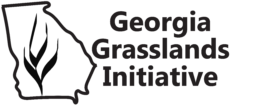The State Botanical Garden of Georgia has a plant propagation from seed class, which is taught by Heather Alley. This is part of the Certificate in the Native Plants Program.
Check out this link to further learn about the Native Plants Certification.
This manual is another great resource to on propagation, and Jan Midgley’s book Southeastern Wildflowers dives into the topic of seed collecting. Two other great resources on native plant propagation are Growing and Propagating Wildflowers by Harry Phillips, which includes details on when to collect seeds and specific tips on how to. Bill Cullina’s book, The New England Wild Flower Society Guide to Growing and Propagating Wildflowers of the United States and Canada, is also a great resource on wildflower propagation.
If you want to dive deeper, check out the National Seed Strategy.
Seed collecting is all about following the 10% rule (never take more than 10% from a site) and storing them correctly if they are wet or dry. Wet seeds have fleshy fruit – wrap them in wet paper towel and don’t let them dry out before planting them. Check literature to see if flesh needs to be removed or not. Careful with Jack-in-the-Pulpit – will hurt bare hands if you clean the fruits without gloves. Dry seeds can be collected and stored in paper bags or envelopes.Most Georgia seeds need 4 weeks cold-wet stratification, but if it’s a mountain species, go 6 weeks.Some seeds need to be covered with soil, some can’t be covered. Some need to be soaked or boiled or nicked with a razor…..Propagation is an art and a science and THE BEST way to learn plants. Send questions!

